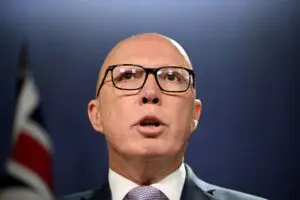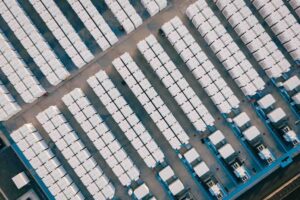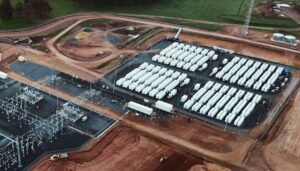There are growing fears that Prime Minister Tony Abbott will bring Australia’s renewable energy target to a shuddering halt as early as January next year, but he will have to find a different reason to justify it.
Abbott, and many of his ministers, MPs and conservative commentators, have criticised the renewable energy target for pushing up costs to consumers. They, and many of the companies, statutory authorities and lobby groups seeking to stop the RET, have also said that the current 41,000GWh target will be impossible to meet by 2020.
But these two assumptions have been destroyed by modeling released by Abbott’s hand-picked energy consultants and modellers ACIL Allen.
Data released to an industry workshop held by the RET Review panel on Monday has shown what other research had already demonstrated, here, here, here, here, here, here, here, and here – that under all the scenarios where renewable energy is encouraged into the market, household electricity prices actually fall.
It also shows that the other major argument for changing the RET – that the target could not be reached (this was the main argument of the major retailers such as Origin Energy, AGL Energy, and even the Australian Energy Market Commission) – is also nonsense in the eyes of ACIL Allen.
This graph below illustrates the point about the costs to consumers. It shows that after a short-term rise, the medium to long-term benefits of more renewable energy are palpable. According to attendees, however, ACIL Allen sought to play down the impact of the “merit order” effect, where renewables force down the impact on wholesale prices, saying they were “unreliable”
ACIL Allen told the workshop that it was instructed by the PM’s office, which is controlling the RET Review outcome, to model four alternatives to the current fixed target of 41,000GWH (the reference case).
These include two scenarios where the renewable energy target is effectively brought to an immediate halt. One is total repeal, where even the renewable energy certificates already issued cease to have value, and one where existing and currently developed projects are “grandfathered”, but no new renewable energy generation is allowed.
(Renewable energy certificate prices are now down to a record low of just $22 – reflecting the dismay and pessimism in the renewable energy industry).
One of the other scenarios involves a “real 20 per cent” target by 2020 – modeled here to be 25,500GWH (in other words a reduction from the current target of two thirds of the amount of renewables to be built between now and 2020). This also includes the effective removal of the small-scale solar scheme.
The fourth scenario comprises a real 30 per cent by 2030 target, which would have the impact of delaying some investment, but resulting in 53,000GWh of renewables built out to 2030 – giving an extra decade to build just 12,500GWh above the current 41,000GWh target for 2020.
But while the two main arguments prosecuted by the government and the incumbents appear to have been demolished by the government’s own modeling, a new justification for strangling the renewable energy target has emerged.
This is that renewables are not so much a burden on households, but rather a “transfer of wealth from generators to households.”
Say what?
Get this, the building of renewable energy projects will be dubbed as a “resource cost” – ACIL Allen puts it at more than $12 billion – of investment that is “not needed” because so much gas and coal generators were built (with the aid of large subsidies and mostly in monopoly markets) on the (false) assumption of rising demand. ACIL Allen representatives even talked of having 70-year-old coal generators still operating.
Really, you couldn’t make this stuff up.
These estimates are justified by a series of assumptions that paints a kind view of the cost of fossil fuels, and ignores the benefits of renewables. In the modeling, there appears to be no account of network or environmental benefits of renewables, and no account of how they could offset 24 million tonnes of abatement from the government’s putative “Emissions Reduction Fund.”
It may be tempting to think that the 30/30 scenario could be adopted by the government, but this graph shows why it will be fiercely resisted by the incumbents – under this scenario (the blue line) the wholesale price is the lowest, and the so called “transfer of wealth” from the generator to the consumer is the greatest.
The other problem is that there remains an ideological opposition to renewables within the conservative party – particularly wind energy – and a refusal to accept the fact that renewables actually work.
Polling suggests that solar remains enormously popular, a realisation that is dawning on MPs, even those in the Liberal and National Parties.
Despite this, the solar industry is also in grave fear about its future. Even under the “real 20 per cent” scenario” painted by ACIL Allen, the SRES scheme that supports new solar installations is gutted – with “deeming” – or upfront payments – reduced from 15 years to 10 years and the SRES component ending in 2020.
Solar industry people attending the meeting said the characterisation of solar was confusing and contradictory. On one hand it was described as “expensive abatement” in the order of $150/tonne, and on the other it was described as so cheap that it didn’t need subsidies.
The solar industry was confused as to how the modeling could show the abatement cost of solar to be three times that of wind. Solar is seen as more of a threat to the traditional utility model because of its ability to reduce demand – and revenue to generators – at the most profitable times of the day.
Of more concern, was the estimate from ACIL Allen that the solar industry would likely experience a 30 per cent slump if the solar support was removed, but that this would be “tolerable” because in the long term the market would rebound.
John Grimes, from the Australian Solar Council, said even with prejudiced assumptions – including only a modest rise in gas and coal prices – the modeling still disproved the government’s original assumptions.
Still, there now appeared to be a clear intent to remove the solar support mechanisms as a minimum. “Now about 15,000 solar workers don’t know whether they will have a job at Christmas,” he said.












